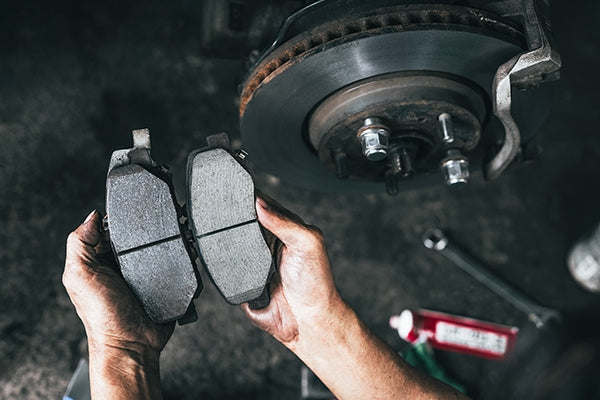Safety First: The Must-Have Gear Every UTV Rider Needs
There’s nothing quite like the rush of taking your UTV off the beaten path—flying through the desert, climbing rocky trails, or blasting across open terrain. But with all that fun comes one important thing: safety.
Let’s be real—UTV riding isn’t without its risks. Rollovers, debris, collisions... they happen. Even seasoned drivers can get caught off guard. That’s part of the adventure, but it’s also why being properly geared up is non-negotiable. The right equipment not only protects you but makes your ride more enjoyable and confidence-inspiring.
At Fastlab, we’re all about pushing the limits—safely. So here’s a breakdown of the gear you should never ride without.
Helmet First. Always.
A helmet isn’t just a good idea—it’s the most important piece of gear you can wear. It protects your head from impacts, keeps wind and dust out of your face, and if you’ve got a good comms setup, lets you stay in touch with your crew without yelling over the engine.
Whether you’re crawling through trails or ripping wide-open dunes, helmets prevent minor spills from becoming major injuries. We recommend a snug, DOT-approved full-face helmet for maximum protection—and because, let’s face it, every racer wears one for a reason.
Helmet Types:
-
Full-face: Best for speed and protection. Also ideal for built-in communications.
-
Open-face: Better airflow, but you’ll need goggles. Wind noise can mess with comms.
-
Modular: Great balance—flip it up when you need air, lock it down when it counts.
-
Brain buckets: Cool, yes. Protective? Not so much. Only for very casual cruising.
Look for helmets with solid certifications (DOT, ECE, Snell), quality materials (like fiberglass or carbon fiber), good ventilation, and a removable liner for post-ride cleanup.
Check out some helmets from our partners Fastlab Motorsports HERE
Strap In with a Racing Harness
That factory seatbelt? It’s not going to cut it when you’re hammering through whoops or tipping sideways on a rock ledge. A 4- or 5-point harness keeps you planted and protected, especially during rollovers.
We always recommend harnesses with mechanical latches and sewn-in shoulder straps—like the Simpson D3 or PRP 5.2S. Pro tip: tighten your lap belt first, then the fifth point, then snug down the shoulders. Now you’re locked in and ready.
Click HERE for a great option!
Eye Protection: Don’t Ride Blind
If your helmet doesn’t have a visor, you absolutely need goggles. Dust, dirt, rocks, bugs—none of them belong in your eyes. Quality goggles with UV and anti-fog protection are worth every penny. They’ll keep your vision clear and your ride smooth.
Gloves, Boots, and the Right Clothing
Your hands and feet do a lot of work on the trail—don’t leave them exposed. Gloves protect against burns, rocks, and blisters. Reinforced palms and knuckles help when things get rough. Boots should offer ankle support, protection from hot parts, and solid grip for slippery terrain.
Don’t forget your jacket and pants. Weather can change fast—especially with elevation gain. We’ve gone on rides where it was 90° at the bottom and freezing at the summit. UV, wind, and exposure all add up, so dress smart and layer up.
Stay Connected: Communication and Navigation Gear
Once you try proper comms, you won’t go back. Being able to talk to your crew in real time—whether you’re spotting an obstacle or coordinating a trail repair—changes everything. Systems from Rugged Radios or PCI Race Radios are solid and built for off-road abuse. Bluetooth integration for music, calls, or GPS? Even better.
On that note—don’t skimp on navigation. A solid off-road GPS (like Garmin or OnX Offroad) can save you time, stress, and fuel. You’ll know what trails are legal, what’s around the bend, and how to get back to camp without playing the guessing game.
Our favorite communication systems can be found HERE
Emergency Essentials
Things go wrong—it’s part of the ride. Having the right emergency gear can make a bad situation manageable.
First Aid:
Keep a well-stocked first aid kit. We’re talking more than Band-Aids—include painkillers, burn gel, gauze, and allergy meds. And pack it in a waterproof case where you can grab it fast.
Fire Extinguisher:
Your UTV runs hot—literally. Electrical or fuel fires aren’t common, but they do happen. Mount a Class B:C extinguisher somewhere easily accessible (not under the hood—it won’t help you there).
Recovery Gear:
A good tow strap (rated to 7,500+ lbs), a compact shovel, a multi-tool, and a seatbelt cutter are all essentials. You’ll use this stuff more than you think—getting unstuck, helping a buddy, or fixing something on the fly. A headlamp or flashlight is also great for night rides or exploring an old mine shaft you weren’t planning on finding. Check this one out!
Invest in Quality Gear
When it comes to safety gear, don’t cheap out. High-quality gear lasts longer, works better, and most importantly, keeps you alive. Whether it’s a helmet, harness, goggles, or your comms setup—go with gear you trust.
And if you’re not sure what fits your ride style or setup, reach out to us at Fastlab. We live this stuff, and we’re always down to help you gear up right.


